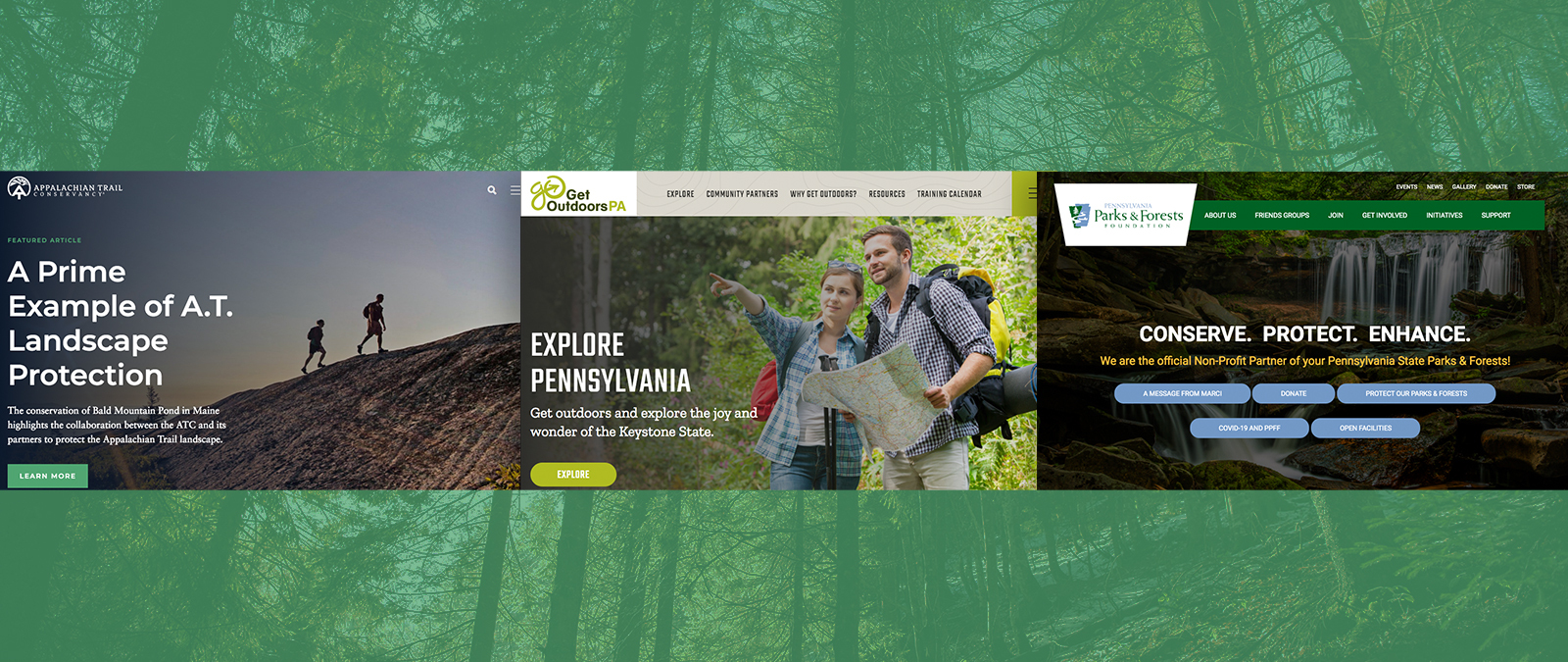Conservation and land trusts around the world work tirelessly to protect and promote our most cherished greenspaces. In order to accomplish this important work, these organizations need a robust marketing strategy that fully communicates the urgency, what’s at stake, and how people can support their efforts.
However, many of these groups aren’t able to sink thousands of dollars into marketing and need direction on the best use of marketing dollars when available options outpace limited resources. We’ve had the great pleasure of working with multiple conservation and land trust organizations over the years and want to share what we have seen work well for our clients. This is a unique niche in the nonprofit world that deserves a customized approach in order to be effective. We recommend that conservation and land trust organizations begin by creating a strong website and building their marketing efforts from there. Your website serves as the central hub and foundation for all of your donor, supporter, and volunteer communications so it needs to be the best it can be.
Thinking through everything a website needs can be overwhelming and exhausting, especially when you have a ton of content to organize. So we created this web design checklist especially with conservation and land trust leaders in mind, so you can know where to start and how to ensure that your website has all the necessary elements to support your mission.
Here’s what you need to know about web design for conservation and land trusts.
Build a Responsive Website
No matter what you put on your website, or how you plan to use it, the most important thing to remember is that your website must look great and load fast on any and every device. This is called responsive website design and is critically important for organizations whose patrons typically access their content on-the-go. Considering that websites are typically designed on desktop computers in offices, it’s necessary to proactively double check that the content flows well and is easy to access on tablets and mobile devices.
If you need help knowing evaluating your website’s responsivity, here are some points to check:
- Test the website on different browsers and devices
- Evaluate load time and whether the site loads consistently across browsers and devices
- Check that images and videos adjust to display correctly across browsers and devices
- Click every link and make sure that they are in the right places and that none are broken
- Consider whether the font easy to read across browsers and devices
Showcase Your Work
One of the best ways to showcase your work is to incorporate imagery that represents your target audience interacting with your product or service. Conservation and land trust organizations have a great advantage when it comes to imagery. As stewards of the most beautiful places on earth, make sure that you capture high quality photos and videos of people enjoying and caring for the lands you serve and prominently display those on your website.

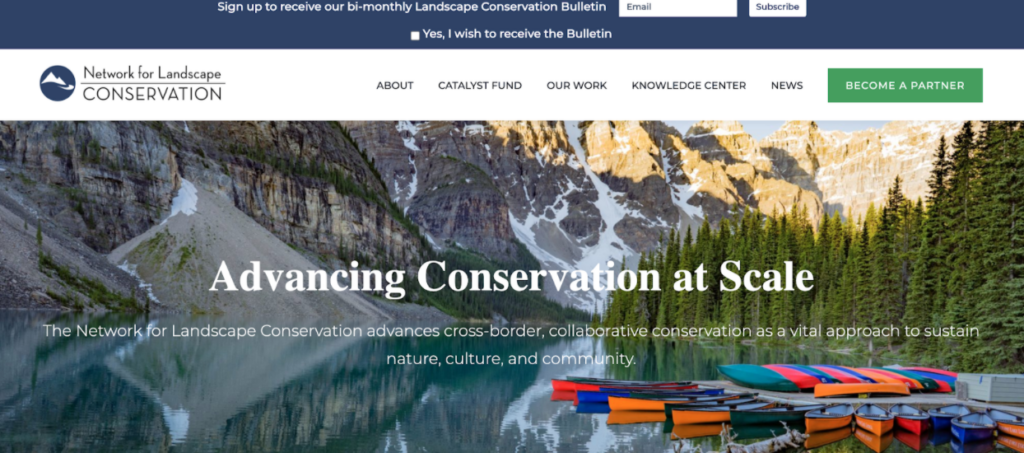
Think Strategically About Organizing Content
Nonprofits often have a ton of information to share on their websites and organizing all that content in a user-friendly way can be complicated. It’s easy to get lost in the weeds and structure content according to internal organization when that may not make the most sense to a supporter trying to find what they’re looking for on your website. The navigation has to be intuitive, clean, and designed with the end-user in mind.
When we designed the website for the Appalachian Trail Conservancy, site navigation was a top priority. We worked together to organize the content in such a way that each marketing persona can easily find what they’re looking for. There are links full of content geared toward hikers, donors, educators, and friends of the trail who want to stay up-to-date on the latest news and information.
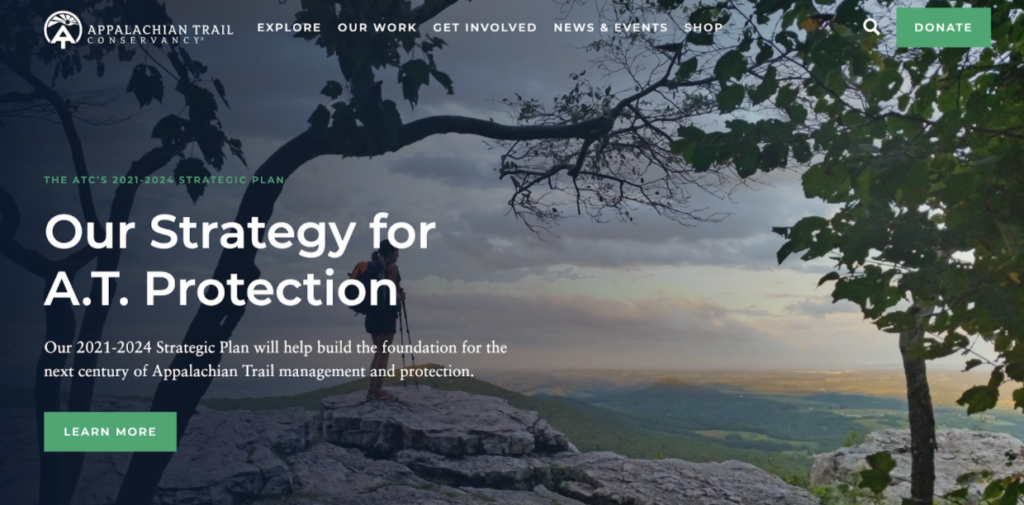

With each of our conservation and land trust clients, content and database organization is a key function of the websites we build. There is so much to know about the lands, the dangers and threats, the work to protect them, and the vast opportunities to enjoy them. With each client we strive to create a navigation and searchable database that is intuitive and displays content in a way that makes it easy for website visitors to interact with it and find what they need.
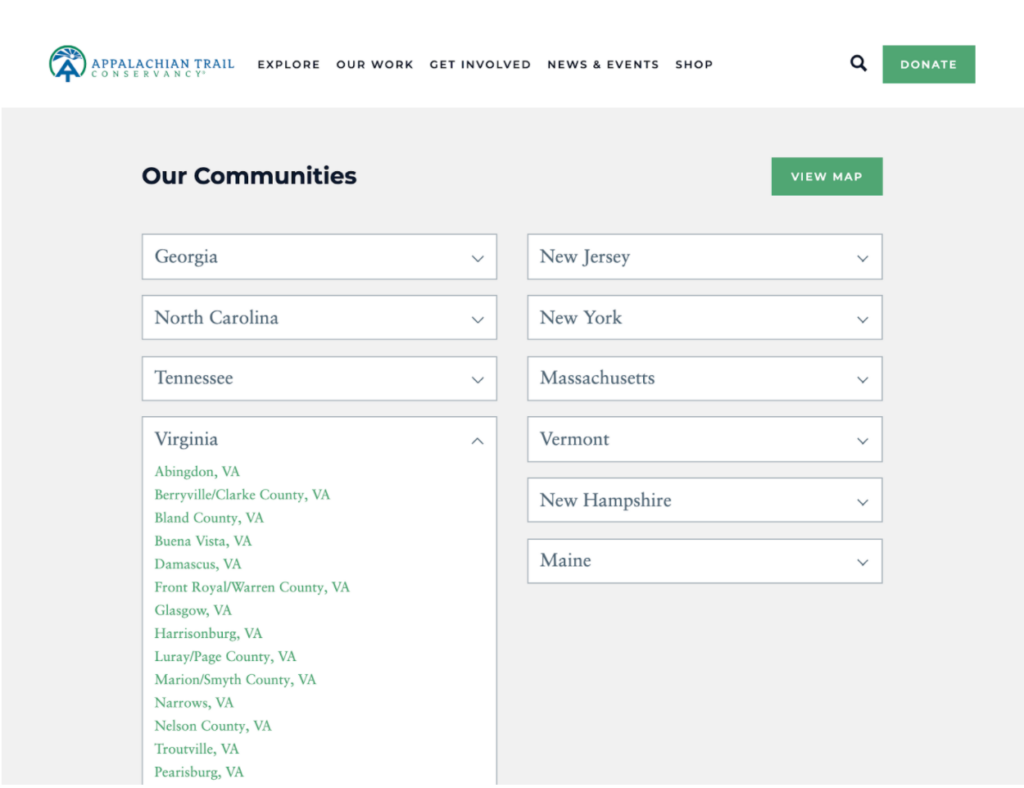
Make it Interactive
Another mission-critical website component for conservation and land trusts is interactive functionality. What we mean by that is you want more than a flat website with static information. The people accessing your content are likely active outdoor enthusiasts who are looking for ways to engage with not only your content but also the treasured lands you protect.
We had the opportunity to partner with the Pennsylvania Parks & Forests Foundation on their website redesign and built a useful, interactive feature to help fans of specific parks and recreational areas to connect with other “friends” of the area to volunteer their time, services, and support to these spaces. Website visitors can easily navigate to their favorite outdoor area using the interactive map or the side navigation. It is easy to sort destinations by region to find a friend group closest to you.
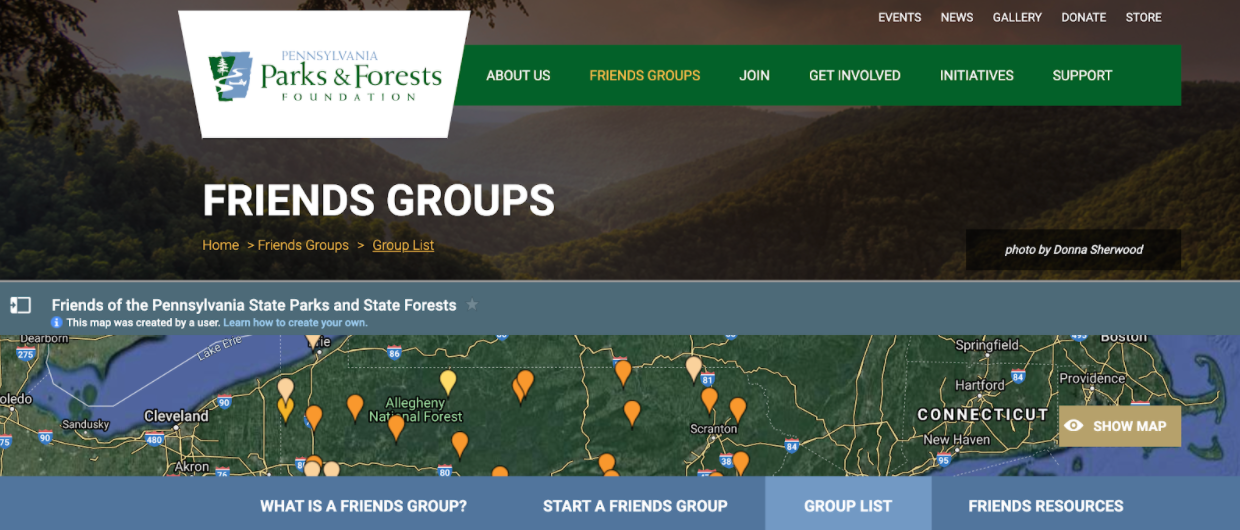
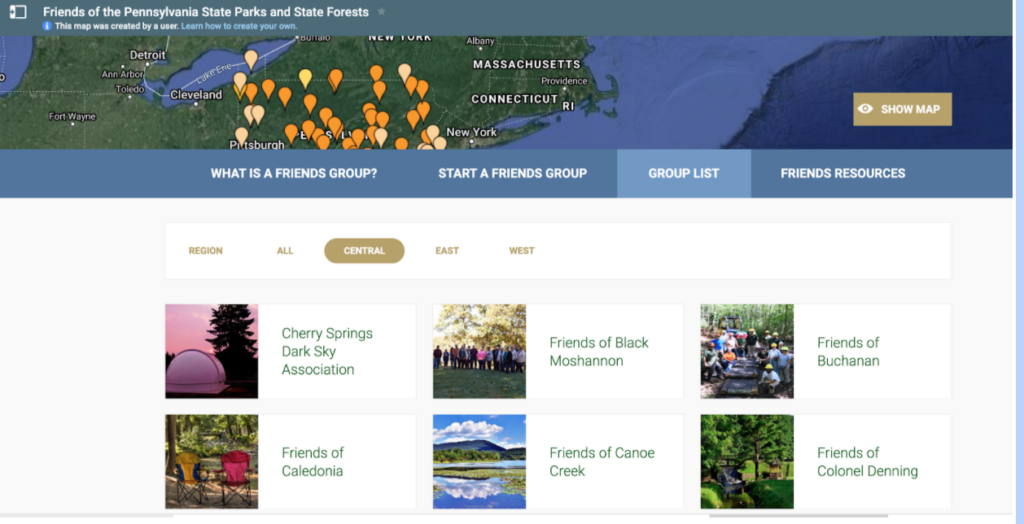
For conservation and land trusts, this is another great opportunity to showcase your work using imagery. There are many innovative ways to create an online community around the lands you serve. We helped one of our clients with an annual photo contest that raises awareness and enthusiasm among supporters and friends of the park. If you need help with social media ideas or other ways to stay connected please let us know how we can help!
Emphasize Calls to Action
One of the most important jobs of your website is to raise awareness and support for your conservation efforts. Beyond the basic “donate” button, the community needs to know your needs in order to meet them.
When we worked with the Pennsylvania Parks & Forests Foundation on their website, they wanted a way to present a specific list of needs to the community organized by parks, forests, region, and need type. We built a custom solution that displays the information in a nice, clean format making it easy for supporters to navigate to a specific need in a location of their choosing.
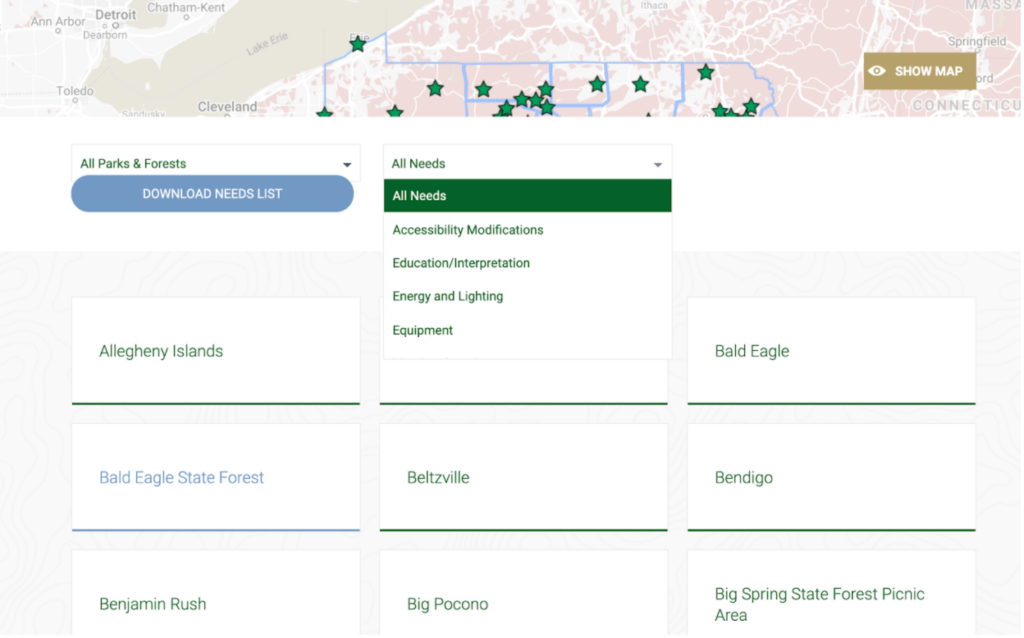
Provide Resources
One of the greatest impacts conservation and land trust organizations can make with their websites is providing valuable resources to the public. The more you can educate the local and national community about the lands you steward, awareness will grow and you’ll have the chance to engage with a larger audience.
The Network for Landscape Conservation, another client we’ve worked with, has a robust library of information and needed a way to make this content easily searchable and accessible to the public.
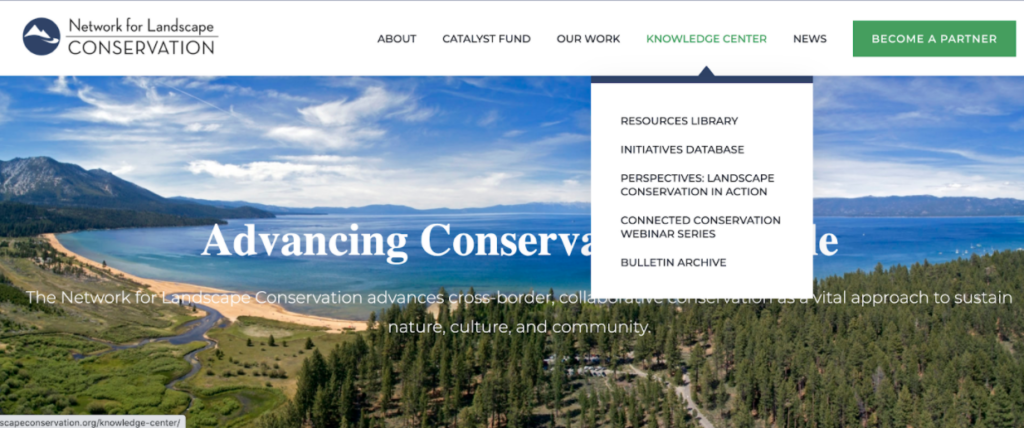
We collaborated to create a knowledge center that includes a resource library, initiatives database, articles and blog posts, webinars, and bulletin archives. The resource center is searchable by category and subcategory to help website visitors sort through the large volume of available content.
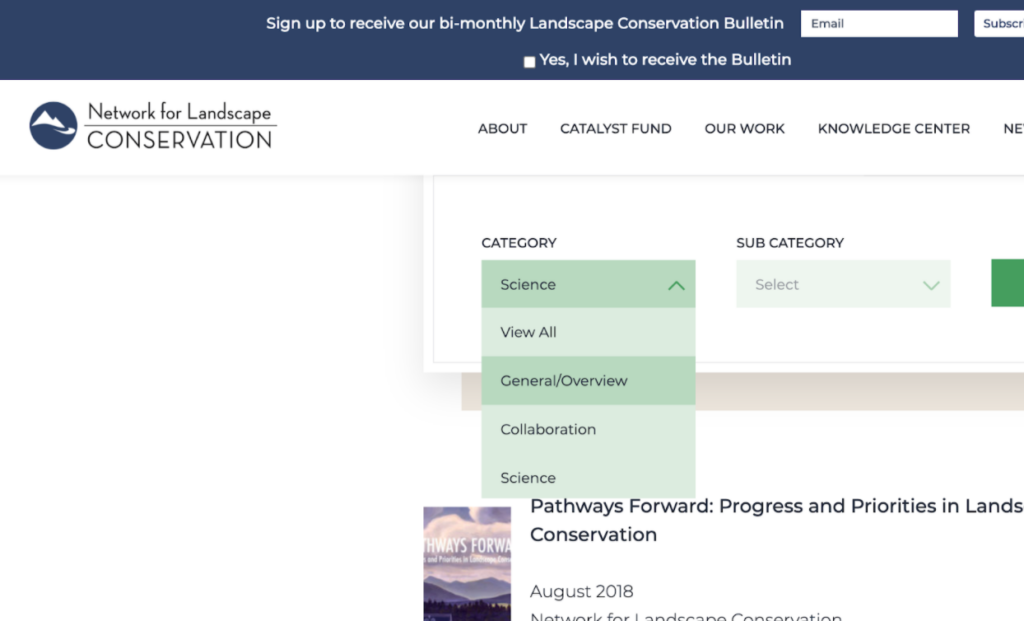
Make it Easy to Stay Connected With Visitors
This advice applies to every website, but do everything you can to make it easy for website visitors to take the next step with you. Prominently display where to sign up for your e-newsletter. Consider creating a lead offer in exchange for a visitor’s email address. Display social media icons so visitors can effortlessly engage with you on these platforms. The Appalachian Trail Conservancy makes it easy for hikers to stay connected through a section on their website called “trail updates.” This area was made to be clean and simple for backpackers to navigate so they can get the latest news and information in real time while out on the trail.

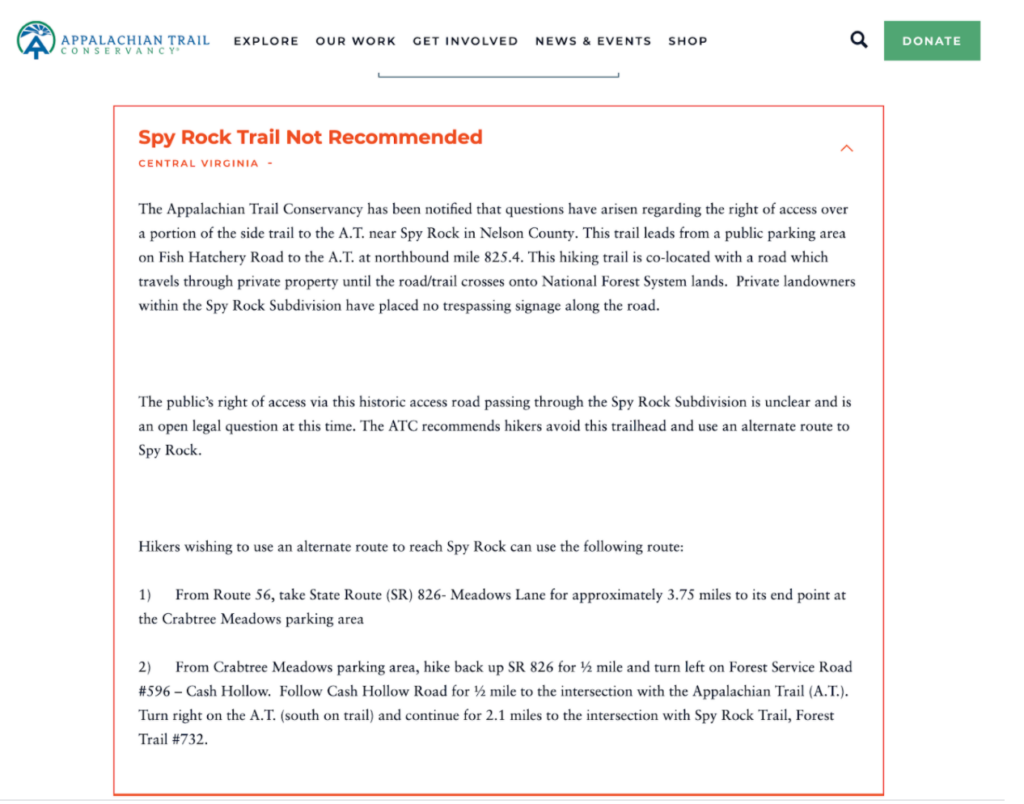
Let’s work together to protect our Nation’s most treasured natural resources!
We partner with conservation and land trust organizations to build custom websites that suit your individual needs. This list is by no means exhaustive, but provides a foundational starting point for organizations looking to evaluate their current site or make a change. If you have questions or would like to schedule a meeting to discuss your next website project please drop us a message and let us know what works best for you. We’ve love to help you make stronger connections between the lands you love and the people who enjoy them!

